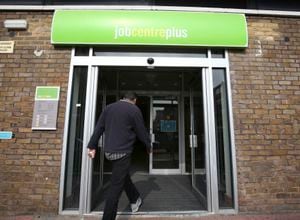Shropshire's unemployment rate falls again
Shropshire's unemployment rate continues to outstrip the regional average after another fall in the number of people claiming out-of-work benefits – but pay growth remains in the doldrums.

In September an average of 1,995 people in Shropshire Council's area and 1,925 in Telford & Wrekin signed on for various forms of benefit – down from 2,005 and 1,950 respectively them month before.
It means that the unemployment rates for the two areas now stand at 1.1 and 1.8 per cent respectively – against a West Midlands average figure of 2.4 per cent.
The figures have shown little movement over the course of the last year, and are consistently at a low level for the county. The number of people out of work grew in August but fell back again last month, and the changes in the numbers have consistently been in the order of a couple of dozen, rather than hundreds.
The 685 people claiming benefits in Powys was identical to last month's figure, leaving the Mid Wales county with an unemployment rate of 0.9 per cent.
Nationally unemployment fell to a 12-year low, with the jobless total down by 52,000 in the three months to August to 1.4 million, with women driving the growth in employment.
More than 32 million people are in work after a rise of 52,000, including 15 million women, with the female employment rate reaching a record 70.7 per cent, the Office for National Statistics reported.
However, pay growth remains sluggish and is behind inflation. Average earnings increased by 2.2 per cent in the year to August, unchanged from the previous month, and below the latest RPI inflation rate of 3.9 per cent.
It means that while people may be getting more in their pay packets, they are likely to find that it is not going as far because the prices of the goods they are buying are increasing faster than the value of their pay packets.
ONS statistician Matt Hughes said: "Employment growth in the latest three-month period was driven mainly by women, with a corresponding drop in inactivity.
"Vacancies remain robust, at a near-record level.
"On the other hand, total earnings in cash terms grew slower than prices over the last year, meaning the real value continues to fall – down 0.3 per cent over that period."





